Did you know that hedgehogs and porcupines have seven key differences? Well, we’re here to shed some light on these intriguing creatures!
In this article, we’ll explore the contrasting physical appearances, habitats, diets, defense mechanisms, reproductive cycles, behaviors, social structures, and conservation statuses of hedgehogs and porcupines.
So grab a cup of tea and join us on this journey as we uncover the fascinating disparities between these two prickly animals. Let’s dive in!
Key Takeaways
- Hedgehogs have spines while porcupines have quills.
- Hedgehogs are insectivores, while porcupines are herbivores.
- Hedgehogs prefer woodlands and grassy fields, while porcupines can thrive in various ecosystems.
- Hedgehogs are mostly solitary animals, while porcupines form small family groups.
Physical Appearance
Porcupines have quills, while hedgehogs have spines. These distinctive features play a significant role in the physical appearance of these fascinating creatures. Let’s explore the first subtopic: coloration and spine arrangement.
When it comes to coloration, porcupines are typically brown or black, blending with their forested habitats. This helps them camouflage and stay hidden from predators during the day. On the other hand, hedgehogs display a variety of colors ranging from light browns to dark grays, allowing them to adapt to different environments.
Moving on to spine arrangement, both species possess sharp defensive structures; however, they differ in organization. Porcupine quills are longer and can reach up to 20 inches in length. They form an impressive array across their bodies but are absent on their belly regions. In contrast, hedgehog spines cover almost every inch of their body except for some facial areas and underbellies.
Understanding these differences in coloration and spine arrangements gives us insight into the unique adaptations each animal has developed over time. By appreciating these distinctions, we can not only deepen our understanding of nature but also foster a sense of belonging as part of this diverse world we inhabit.
Habitat and Distribution
Contrary to hedgehogs, porcupines can be found in a wide range of habitats. While hedgehogs tend to prefer specific environments, such as woodlands and grassy fields, porcupines are more adaptable and can thrive in various ecosystems.
Here are the key differences in habitat and distribution between these two intriguing creatures:
Hedgehog Habitat:
Woodlands: Hedgehogs feel at home amidst the leafy canopies of forests, where they can find plenty of insects and small prey.
Grasslands: These spiky mammals also inhabit open grassy areas, using their keen sense of smell to locate food hidden beneath the vegetation.
Porcupine Habitat:
Forests: Porcupines have a knack for climbing trees, making forested regions their ideal living space. They often create dens within hollow logs or high up in branches.
Mountains: These resourceful rodents are known to reside in mountainous areas, adapting well to the rugged terrain and cooler climates.
Comparing the natural habitats of hedgehogs and porcupines reveals their contrasting preferences. While hedgehogs carve out cozy homes in woodlands and grasslands, porcupines venture into forests and mountains with ease. Their adaptability allows them to flourish across a wider geographic range than their prickly counterparts.
Whether nestled among lush foliage or scaling rocky slopes, both species find solace in their unique habitats—each playing an essential role in the delicate tapestry of our natural world.
Diet and Feeding Habits
When it comes to diet and feeding habits, you’ll be surprised to learn how porcupines and hedgehogs differ. These intriguing creatures have unique foraging behavior and dietary preferences that set them apart.
Porcupines are herbivores, primarily feeding on leaves, bark, twigs, and fruits. They have a specialized digestive system that allows them to break down tough plant material efficiently.
Hedgehogs, on the other hand, are insectivores with a preference for small invertebrates like insects, worms, snails, and even frogs.
Porcupines rely heavily on their sense of smell to locate food, using their keen noses to detect the scent of vegetation from a distance. They are known for their ability to climb trees in search of nutritious leaves.
In contrast, hedgehogs use their excellent hearing and sense of touch to find prey hidden among foliage or underground.
While both species exhibit different dietary preferences and foraging behaviors, they share one common trait: adaptability. Porcupines can adjust their diets according to seasonal changes in food availability, while hedgehogs have been known to consume bird eggs or even small mammals when necessary.
Understanding these distinctions helps us appreciate the diversity within nature’s tapestry. Whether we marvel at the porcupine’s ability to navigate treetops or the hedgehog’s adeptness at hunting insects under cover of darkness—each creature plays its part in maintaining balance within our ecosystem.
Defense Mechanisms
To better understand defense mechanisms, you’ll be amazed by the various strategies these fascinating creatures employ to protect themselves from predators. Hedgehogs and porcupines have developed unique adaptations that allow them to defend against potential threats.
Here are some of the remarkable ways they ensure their safety:
Spines and Quills
Both hedgehogs and porcupines possess sharp spines or quills covering their bodies. These protective structures serve as a physical barrier, deterring predators from attacking them.
Predator Avoidance
Hedgehogs have an extraordinary ability called ‘self-anointing.’ When they encounter a new scent or taste, they produce frothy saliva which they spread on their spines. This behavior is believed to confuse and repel predators.
Porcupines take advantage of their quills’ defense mechanism in a different way. When threatened, they raise their quills, making themselves appear larger and more intimidating.
These defense mechanisms not only safeguard hedgehogs and porcupines but also contribute to the overall balance of their ecosystems. By understanding and appreciating these incredible adaptations, we can further comprehend the marvels of nature’s ingenuity.
Reproduction and Life Cycle
Reproduction and the life cycle of hedgehogs and porcupines involve fascinating processes that contribute to their species’ survival. These small, spiky creatures exhibit unique reproductive behaviors and go through distinct stages in their life cycle.
When it comes to reproductive behavior, both hedgehogs and porcupines have specific ways of attracting mates. Hedgehogs engage in courtship rituals that include sniffing, circling, and even vocalizations to communicate their interest. Porcupines, on the other hand, use scent marking as a way of signaling their availability to potential mates.
The life cycle stages of hedgehogs and porcupines are quite similar. Both species start as helpless infants or ‘hoglets’ who rely completely on their mothers for nourishment and protection. As they grow older, they become more independent but still stay close to their mothers for guidance.
During adolescence, hedgehogs and porcupines reach sexual maturity and begin seeking out mates. This is a critical stage in their life cycle as it ensures the continuation of their species. After successful mating, female hedgehogs enter gestation while female porcupines experience a longer period known as pregnancy.
Behavior and Social Structure
If you want to understand the behavior and social structure of these fascinating creatures, observe how they interact with their own kind. Hedgehogs and porcupines exhibit distinct communication patterns and group dynamics that shed light on their unique characteristics.
When it comes to communication patterns, hedgehogs rely heavily on vocalizations. They emit a range of sounds, from soft grunts and chirps to loud snorts when threatened or during courtship rituals. Porcupines, on the other hand, communicate primarily through body language. They use their quills as a form of nonverbal communication, raising them when feeling threatened or agitated.
In terms of group dynamics, hedgehogs are mostly solitary animals. They prefer to live alone and establish territories for themselves. However, during the mating season, males will engage in fierce competition for females’ attention.
In contrast, porcupines are more social creatures. They often form small family groups consisting of a male, female, and their offspring.
Understanding the communication patterns and group dynamics of hedgehogs and porcupines provides valuable insights into their behavior and social structure. By observing these fascinating creatures in their natural habitats, we can gain a deeper appreciation for the intricacies of their lives and the importance of belonging within their respective communities.
Conservation Status
The conservation status of hedgehogs and porcupines is of increasing concern due to habitat loss and human interference. These adorable creatures are facing significant threats that have led to declining populations and put them at risk of becoming endangered species.
Hedgehogs and porcupines, with their unique features and important roles in ecosystems, deserve our attention and protection. Habitat loss, primarily caused by urbanization and agricultural expansion, has fragmented their natural habitats, making it difficult for them to find suitable food sources and safe shelter. Additionally, human interference such as road accidents and the use of pesticides have further impacted their populations.
The decline in hedgehog and porcupine numbers is a worrying trend that needs immediate action. Conservation efforts must focus on preserving their habitats by creating protected areas or implementing strict regulations on land development. Education campaigns can raise awareness about the importance of these species in maintaining ecological balance.
Furthermore, research into captive breeding programs should be encouraged to ensure the survival of these magnificent creatures for future generations. By working together as a community, we can make a difference in protecting hedgehogs and porcupines from extinction.
Let us join hands in safeguarding these enchanting animals for the benefit of our planet’s biodiversity.

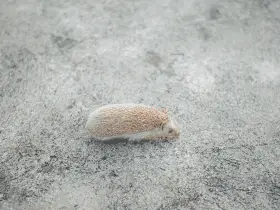
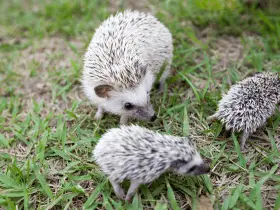
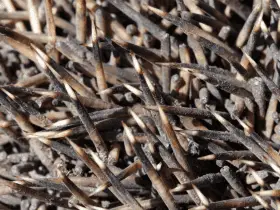



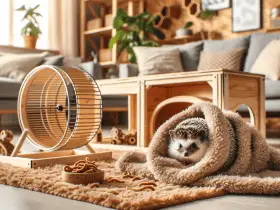

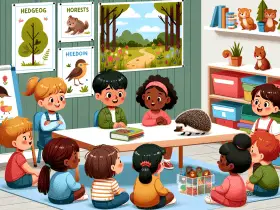
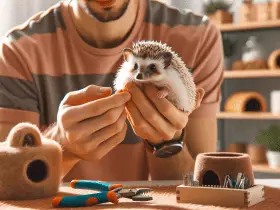
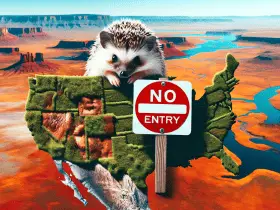
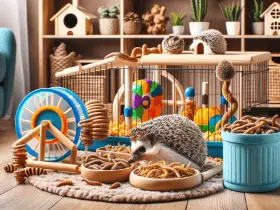


Leave a Reply
View Comments